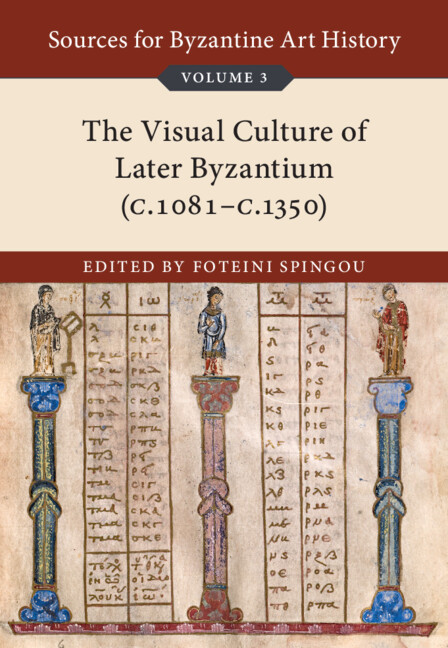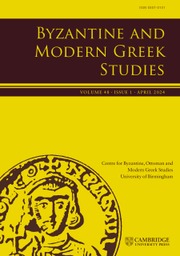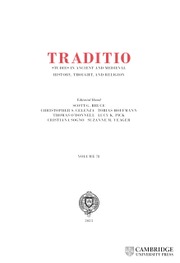Reading in the Byzantine Empire and Beyond
Offering a comprehensive introduction to the history of books, readers and reading in the Byzantine Empire and its sphere of influence, this volume addresses a paradox. Advanced literacy was rare among imperial citizens, being restricted by gender and class. Yet the state's economic, religious and political institutions insisted on the fundamental importance of the written record. Starting from the materiality of codices, documents and inscriptions, the volume's contributors draw attention to the evidence for a range of interactions with texts. They examine the role of authors, compilers and scribes. They look at practices such as the close perusal of texts in order to produce excerpts, notes, commentaries and editions. But they also analyse the social implications of the constant intersection of writing with both image and speech. Showcasing current methodological approaches, this collection of essays aims to place a discussion of Byzantium within the mainstream of medieval textual studies.
- The first survey of the history of books, readers and reading in Byzantium to be published in English
- Covers primary sources produced in many different genres, styles, languages and contexts and discusses a range of modern methodological approaches
- Engages with wider scholarship on the history of the book and suggests future directions for the study of books, readers and texts in the post-Gutenberg age of the internet
Reviews & endorsements
‘Reading in the Byzantine Empire and Beyond is packed with Byzantine scholarship. Its wide range of topics extends from the very first steps of the educational procedure to the results of the Byzantine intellectuality, even outside the empire’s borders. It will be a valuable source for specialized researchers as well as an excellent introductory tool for any scholar interested in the Byzantine universe of books and literature.’ Elias Petrou, Digital Philology
‘Scholars and interested readers will find a wide range of texts with extensive and informative notes and a lengthy bibliography.’ S. Bowman, Choice
Product details
August 2021Paperback
9781108406031
744 pages
228 × 151 × 37 mm
1.06kg
3 tables
Available
Table of Contents
- Introduction to books, readers, and reading
- I. Byzantium: a bookish world Teresa Shawcross
- II. Modern encounters with Byzantine texts and their reading publics Ida Toth
- Part I. Love for the Written Word: Section 1. The Emotions of Reading:
- 1. John Mauropous and the benefits of reading Marina Bazzani
- 2. The autobiographies of the Patriarch Gennadios II Scholarios Michael Angold
- Section 2. Centre and Margins:
- 3. The role of the speeches of John the Oxite in Komnenian court politics Judith R. Ryder
- 4. The liturgical poetics of an elite religious confraternity Paul Magdalino
- 5. Manuscript notes and the Black Death in rural Cyprus Tassos Papacostas
- Part II. Contact with a Living Culture: Section 3. The Power of Rhetoric:
- 6. Ancient Greek rhetorical theory and Byzantine discursive politics: John Sikeliotes on Hermogenes Panagiotis Roilos
- 7. Memoirs as manifesto: the rhetoric of Katakalon Kekaumenos Jonathan Shepard
- 8. Performative reading in the late Byzantine theatron Niels Gaul
- Section 4. Religious Texts:
- 9. The religious world of John Malalas David M. Gwynn
- 10. Oikonomia in the hymns of Romanos the Melode Johannes Koder
- 11. Quotation and allusion in Symeon the New Theologian Manolis S. Patedakis
- 12. Scriptural citation in Andronikos Kamateros Alessandra Bucossi
- Section 5. Secular Texts:
- 13. Aristocratic family narratives in twelfth-century Byzantium Peter Frankopan
- 14. Historiography, epic and the textual transmission of imperial values: Liudprand's Antapodosis and Digenes Akrites Günter Prinzing
- 15. Intertextuality in the Late Byzantine romance Tale of Troy Ulrich Moennig
- Part III. Communication and Influence: Section 6. Educational Practices:
- 16. Late Byzantine school teaching through the iambic canons and their paraphrase Dimitrios Skrekas
- Section 7. Text and Image:
- 17. Eros, literature and the Veroli Casket Liz James
- 18. Object, text and performance in four Komnenian poems Margaret Mullett
- 19. Textual and visual representations of the Antipodes from Byzantium and the Latin West Maja Kominko
- Section 8. Interlingual Circulation and Transmission:
- 20. Basil I, Constantine VII and Armenian literary tradition in Byzantium Tim Greenwood
- 21. Bilingual reading, the Alexiad and the Gesta Roberti Wiscardi James Howard-Johnston
- 22. Transplanting culture: from Greek novel to medieval romance Roderick Beaton
- Part IV. Modern Reading as Textual Archaeology: Section 9. Traces of Authorship:
- 23. Anonymous textual survivals from Late Antiquity Fiona K. Haarer
- 24. Authorship and the Letters of Theodore Daphnopates John Duffy
- 25. Authorship revisited: language and metre in the Ptochoprodromika Marjolijne C. Janssen and Marc D. Lauxtermann
- Section 10. Recovered Languages:
- 26. The lexicon of horses' colours in learned and vernacular texts Erich Trapp
- 27. Multilingualism and translation in the edition of vernacular texts Manolis Papathomopoulos
- Afterword: reading and hearing in Byzantium Elizabeth Jeffreys and Michael Jeffreys.







.jpg)
